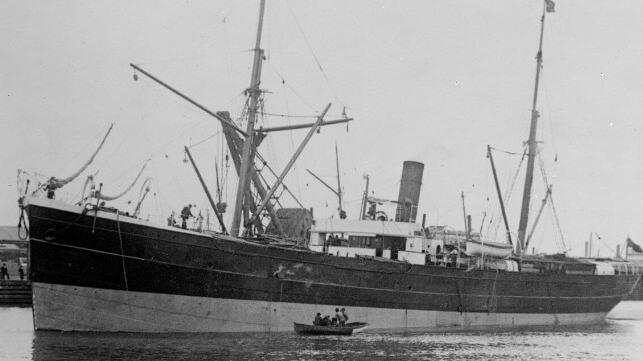As you read this, many regions of the world are implementing crisis plans against drought, while, simultaneously, torrential rains wreak havoc in other corners of the planet, submerging cities and crops under the forces of wild waters. Would we all agree that we should be doing our best to improve our understanding of climate change impacts and design policies to address them? If so, involving Indigenous Peoples and local communities is crucial, and if done properly, the results will be valuable for society at large.
This is a key finding of a large locally relevant and globally coordinated study by the Institute of Environmental Science and Technology of the Universitat Autònoma de Barcelona (ICTA-UAB) that includes 48 Indigenous Peoples and local communities across all climate zones on all inhabited continents. The project "Local Indicators of Climate Change Impacts" (LICCI), led by Victoria Reyes-García, ICREA Research Professor at ICTA-UAB, has been funded by the European Research Council (ERC) and conducted in collaboration with numerous local organisations, ranging from universities and governmental institutions to the civil society. Results from this work were recently published in the journal Communications Earth & Environment.
"The impacts of climate change are enormous, numerous, and different across communities, which makes the design of adaptation strategies challenging. We acknowledge this. And yet the LICCI project has demonstrated that Indigenous and local knowledge brings new evidence that can inform climate change interventions that are also fair and effective," says Victoria Reyes-García, LICCI principal investigator.
Climate change is a global phenomenon with complex and convoluted causes and effects requiring international collaboration at all levels. However, the variability of climate change impacts is such that local interventions to mitigate them are not always effective. Moreover, the complexity of aggregated drivers of change, such as local conflicts, large infrastructure planning, or tourism, to name a few, can distort our comprehension of climate change drivers and impacts. Importantly, climate change impacts are perceived differently by communities whose livelihoods diverge from the economic activities of the world's major economies and who embody distinctive cultural views and understandings of the world. As a result, food sovereignty, economic security, and cultural identity are at stake in many parts of the world.
For this reason, scientists and policymakers have been seeking ways to include the needs of Indigenous Peoples and local communities in their studies and intervention programs for many years now, with international initiatives such as the Local Communities and Indigenous Peoples Platform (LCIPP) of the United Nations Framework Convention on Climate Change (UNFCCC). Unfortunately, more often than not, these communities were overlooked from the very beginning to the implementation stage. One reason, though not the only one, was the challenge of integrating globally applicable and reproducible measurements—critical for informing intricate climate models—with data that are often sparse and less comparable from remote areas worldwide. This challenge is particularly pronounced in regions where communities heavily rely on nature, making them more vulnerable to the impacts of climate change.
And this is the problem the project LICCI–Local Indicators of Climate Change Impacts–set out to address. Through a collaborative effort involving 81 researchers from 65 institutions, the LICCI team developed and tested a site-specific yet cross-culturally comparable protocol. This innovative approach aimed to systematically document climate change impacts as perceived by the inhabitants of the targeted regions. The project engaged over 5,000 individuals across 48 diverse cultures and nationalities, representing 179 communities in 37 countries. While not every community could be consulted, the analysis of 1,661 reported impacts, organized in 369 indicators, underscores the value of broad inclusion. If widely adopted, the LICCI protocols hold the potential to provide a comprehensive global perspective, facilitating the integration of Indigenous Peoples and local communities and their knowledge into the broader landscape of international climate change research and policy.
Indeed, the study consistently underlines that Indigenous Peoples and local communities share a profound awareness of the persistent, palpable, and far-reaching impacts of climate change. Remarkably, they are able to discern and see simultaneous impact of these effects and those instigated by other transformative forces in their communities–ranging from the construction of roads and shifts in national and international land-use regulations to alterations in access to common goods and services. In numerous instances, these communities have demonstrated resilience by proactively responding to such impacts: they have strategically adjusted their socio-economic and cultural activities, aiming to mitigate the repercussions on both the environment and their way of life. But, in other cases, there is not much to be done at the local scale and people feel powerless and overwhelmed.
Comparable to many other research protocols, communities participating in the LICCI project frequently report shifts in average or seasonal temperatures, as well as changes in crop productivity and the abundance of wild plants—these being the most common observations. However, what sets LICCI apart is its nuanced indicator system, enabling the association of changes in mean temperature or crop productivity with diverse observations and explanations across different locations. This ranges from a dry wind emanating from the Sahara affecting Ghana to a reduction in precipitation impacting Chile when accounting for temperature. Similarly, it includes condensation cycles shortening in Senegal and pest infestations in Romania when assessing crop productivity.
How can Indigenous Peoples’ and local communities’ knowledge influence climate change research and policy?
In Spain and around the world, the LICCI project has demonstrated that changes in the way local communities interact with the environment serve as crucial indicators of the climate changes they observe. Considering the complex and in-depth knowledge they have proven to have, along with their capacity to adapt to climate change and mitigate its impacts on their communities, the LICCI Consortium has distilled their learnings into three important recommendations for both researchers and policymakers:
– Engaging with Indigenous Peoples and local communities broadens, enriches and deepens our understanding of climate change and its impacts at the local level. This understanding can be utilized to enhance locally relevant adaptation plans and interventions.
– In the context of global negotiations for climate justice, the LICCI project provides a methodology to measure and compare climate change impacts worldwide, which can also inform appropriate compensatory measures.
– Protecting Indigenous and local knowledge and cultural systems involves supporting their capacity to adapt to ongoing impacts and enabling them to contribute to global mitigation efforts.
The LICCI communities in Spain
The LICCI project has studied three regions in Spain–Cabrales in Asturias, Sierra Nevada in Andalucia, and the Cap de Creus region in the Costa Brava. These regions, chosen for their unique orographic conditions and diverse ecological settings, provide compelling examples of how local communities adapt to and deeply understand the nuanced impacts of climate change.
In the towns of Arenas, Arangas, and Asiego in the Cabrales municipality, researchers have documented the impacts of climate change in home gardens, which are crucial for food independence. Local peoples describe the unsettling blurring of seasons, with changes in rainfall and temperature as well as extreme weather events that have altered irrigation practices and harvesting schedules, contributing to an increase in crop diseases. To counter these challenges, residents are constructing greenhouses and water tanks, and intensifying the use of fungicides.
In Sierra Nevada, a European biodiversity hotspot housing the Sierra Nevada Global Change Observatory, men and women reported similar climate change impacts. Notably, those with higher education, who are the least likely to work in the primary sector, show the least awareness of these impacts. This underscores the significance of local knowledge about the terrain and ecosystem for understanding the complexities of climate change.
In the Costa Brava, LICCI experts have worked with artisanal fishermen and documented their advanced knowledge of the environment. Local fishermen relate changes in storms and wind to changes in the population of various marine species that ultimately affect their livelihoods. In fact, the complex ecological knowledge they possess allows them to identify impacts of climate change that have not been thoroughly examined in scientific literature, such as effects on the behavior of marine animals, or on food chains, and even synthetic pollution.
JOURNAL
Communications Earth & Environment
SUBJECT OF RESEARCH
People
ARTICLE TITLE
Indigenous Peoples and local communities report ongoing and widespread climate change impacts on local social-ecological systems



